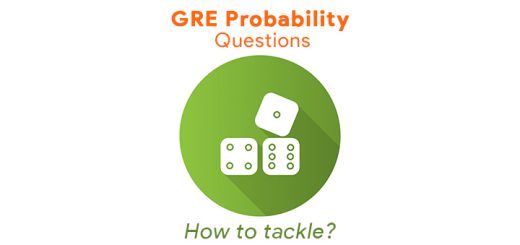7 Shortcuts to get a 320 in GRE
“Ask any seasoned war general, and he will affirm that every war is won well before it’s fought” – The probability of winning a war is entirely dependent on how you prepare your attack and mount defenses. This principle is also applicable to achieving a 320 in GRE where it may seem like you are waging a war to win your target scores.
The way you fashion your GRE preparation decides your performance in each section and ace the test. Even though scoring 320 in GRE is definitely not a finger-snapping activity, it is achievable with smart GRE prep courses.
We will lay down some proven strategies that will enable you to crack the 320 mark in GRE with much ease and surety.
#1: Ace those words
There is much talk about typical GRE words, which if mastered would ensure you are ahead in the race. All of that is no trash talk, and actually, that bunch of 3500 GRE words goes a long way in getting you tuned to the words that will pop up during your GRE. For example, learning words can help you differentiate between similar answer choices in Text Completion and Sentence Equivalence type questions.
AdmitEDGE Pro Tip: However, learning all 3500 words can be quite a mammoth task, especially if you are pressed for time. A better way to approach this situation is to target learning, remembering, and applying 1000-1200 GRE words that appear in the High Frequency/Priority Lists. A fun way to learn words and remember them is to relate it to memorable picture clues. Since we remember movie scenes better than text, you are twice as likely to remember the word with a suitable picture.
#2) The 2-Minute Rule
One of the most profound unofficial rules to appearing for GRE is to avoid spending more than 2 minutes on any given question. The format and structure of this test are designed such that, you have 20 questions & 35 minutes for Quant and 20 Questions & 30 minutes for Verbal.
However, note that not all of the questions you encounter will require you to spend 2 minutes. One good way to go about allocating your time is to follow a system based on difficulty level.
For example, you can allocate time by strictly following a target time for each type of question.
#3: All hail the Official Guide to GRE
There is no doubt that the Official Guide to GRE, issued by ETS, is the most authoritative material for GRE test preparation and if you were to ignore its importance, you are mistaken.
Since ETS conducts GRE, you can be sure that you will find accurate GRE-style questions in this Guide. Practising from here will help you get a hang of what to expect on your D-Day. Of course, the book is not exhaustive for your preparation, but its importance is paramount. Also, since GRE is an online test, practising from a book alone may not be the best for improving your time management skills.
#4: Master Mental Math Tricks
Go back to your school days. Dust up your old school books, if you have them. If you don’t, find kids around you who could lend you some of those!
Quick calculations, being on your feet with arithmetic, and having the quintessential formula on your fingertips will be key to pacing through the Quant section. Being able to “Mental Math” the points where the graph for x2 = 12 – x would touch the axes will give you those extra 30 seconds to solve the next question – which would otherwise be lost in rearranging the equation and solving for the roots of the equation.
Working through the sections this way will help you save some valuable time, which can be better utilized for real problem areas like Reading Comprehension.
AdmitEDGE Pro Tip: Quite often, students who score 160+ in Quant are able to unconsciously visualize the problem. Developing a knack for this type of mathematical modeling helps you.
#5: Template to the rescue!
For every Reading Comprehension passage, make a habit of creating a flowchart or mind map. This will strengthen your understanding, help you make connections between different ideas presented, and enable you to access data that is most relevant to the question asked.
If you have an engineering background or some experience with solving physics problems, you’d remember how your favorite lecturer would advise taking the Free Body Diagram route to solve any problem statement. Since every problem crafted for GRE is essentially based on typical frameworks of concepts, taking such flow-/map-based approach could help you reverse engineer the problem statement.
For example, when faced with a Reading Comprehension question, utilize the following template to dissect a paragraph into a sequence of ideas.
This type of reading is called Analytical Reading. It is the concept of breaking down a complex passage into a series of ideas that are interconnected by a common theme/purpose.
To understand more about Analytical Reading, click here: http://bit.ly/rc-mainidea
AdmitEDGE Pro Tip: You can also use the template to write your AWA essays. This works both ways because reading and writing are complementary skills. That is why it is also highly effective to read newspaper articles twice a day, particularly the Editorial/Opinion Column of leading newspapers such as The Hindu or NY Times. These columns, written by the editors of the papers themselves, use the same kind of language and argumentative style of English.
#6: A Mock is a Must!
You have to be in Zen Mode when in session for your GRE test. The GRE is a 4-hour long exam fraught with its own set of booby traps. If you’re not alert enough, you could easily make silly mistakes along the way and lose valuable points.
To tackle this, you must accustom yourself to the GRE test environment as much as possible. Investing in an effective GRE mock test source can go a long way in helping you increase your focus, attention, and concentration.
You see, there are many free GRE practice test strewn across the internet, but hardly a handful would ever be remotely close enough to the real GRE. There is no point in practicing using such tests if it is not fully adaptive and doesn’t allow you to test your time management skills.
AdmitEDGE Pro Tip: The best method to train yourself to answer quickly but also accurately is to first learn the concept, take an untimed test to see where you stand, go back and practice different variations of such questions. After that, when you’re ready, taking a fully adaptive, timed test will teach you to manage time effectively.
#7: Success comes to those who prioritize
Knowing what to prioritize and how to allocate time becomes the differentiating factor among students who cross the 300 mark. You can allocate time on the following basis:
- Based on Content
- Based on Skill
- Based on Difficulty Level
For example, a sample Verbal study plan for 150+ GRE score based on content would be:
- Single & Double Blank TCs
- SEs
- Short & Medium RC Passages
- Learning 1000-1500 GRE words.
Lastly, since GRE is a section-wise adaptive test, the difficulty level of the questions will depend on your performance. However, as a general rule of thumb, you can expect the average difficulty level of the questions to range from 2 to 4. So, focusing on these types of questions will be instrumental in achieving your target score.
Depending on your Achilles’ heel, you can tackle the GRE syllabus accordingly. Bear in mind that you can save a lot of time in improving your weaker areas if you get regular feedback from an expert who can tell you exactly how to fine-tune your preparation.
In conclusion, I would like to say, hacks or not – your road to a 300+ in GRE will not be a flash in the pan. These tips would help you steer your path – but a guiding spirit has been the key in many success stories.
After all, a sailor in search of his destination is only as good as his guiding compass!
May the force be with you!











